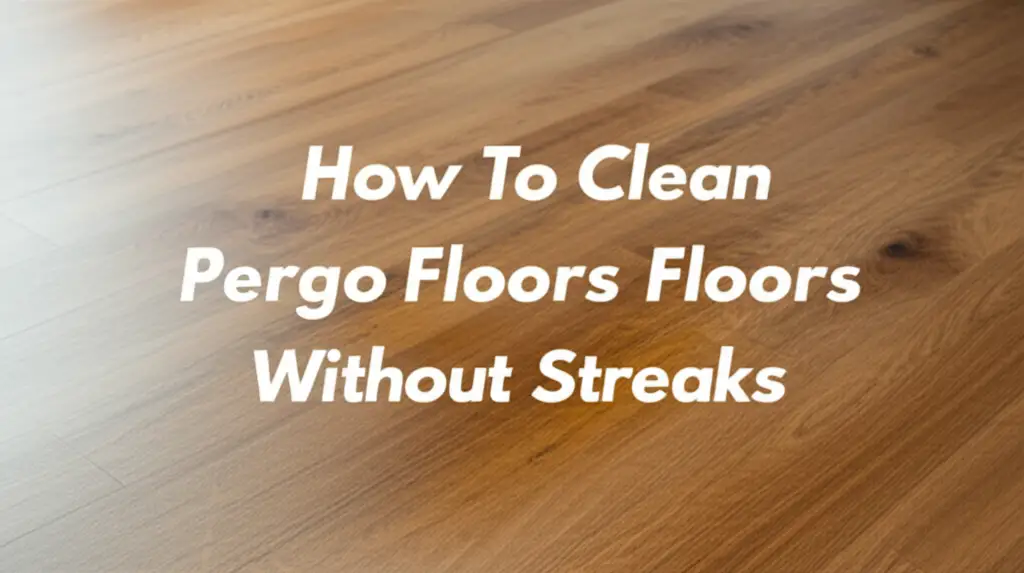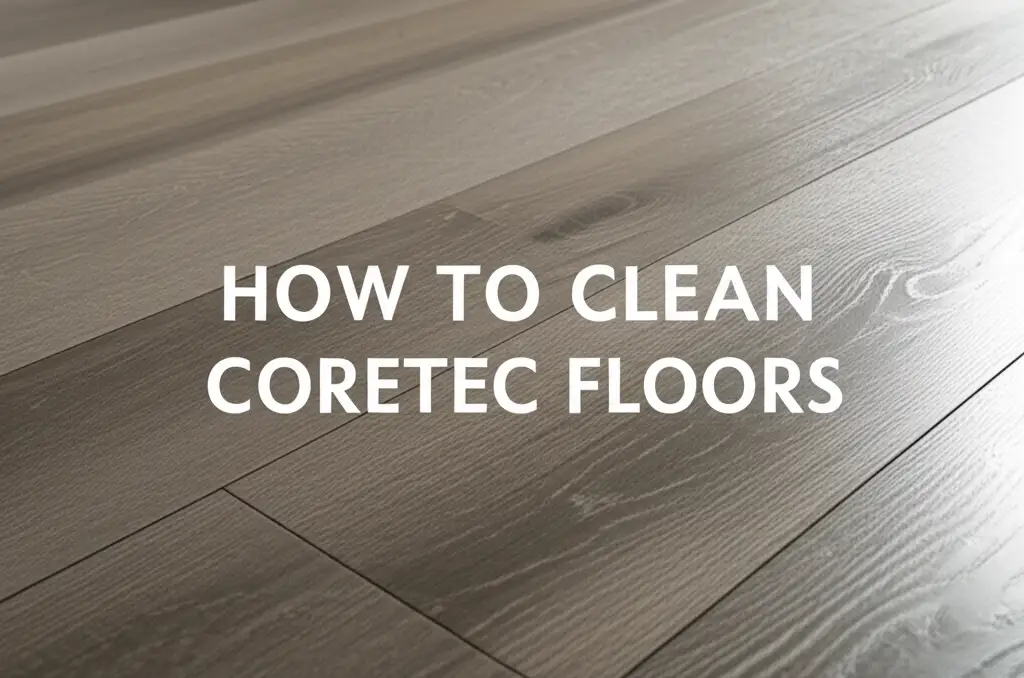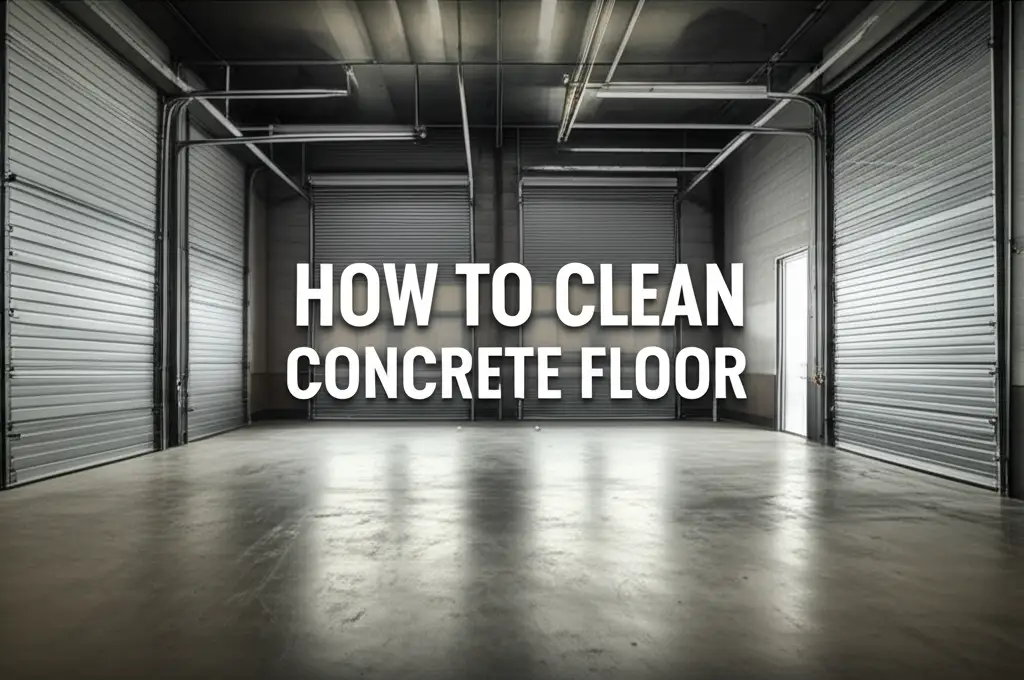· Floor Care · 12 min read
How To Clean Pergo Floor

Unlock the Secrets: How To Clean Pergo Floor Effectively
Having beautiful floors makes a big difference in any home. Pergo floors offer a durable and attractive solution, mimicking the look of real wood without the high maintenance. But even these robust surfaces need proper care to stay their best. I often get asked, “How to clean Pergo floor effectively?” Many people worry about damaging them or leaving streaks.
My goal today is to share proven strategies for keeping your Pergo floors spotless. We will explore the right tools and cleaning solutions. You will learn daily habits and deep-cleaning techniques. I will also provide tips for handling stubborn stains and avoiding common mistakes. This guide helps you maintain the beauty and longevity of your Pergo flooring. Let’s get your floors shining.
Takeaway
- Sweep or Vacuum Regularly: Remove loose dirt daily to prevent scratches.
- Use Specific Cleaners: Opt for pH-neutral, Pergo-approved, or laminate floor cleaners.
- Damp Mop, Not Wet: Use a well-wrung mop to avoid water damage and streaks.
- Address Spills Promptly: Clean up liquids immediately to prevent absorption.
- Avoid Harsh Chemicals: Steer clear of wax, oil-based products, or abrasive cleaners.
How do you effectively clean Pergo floors?
You clean Pergo floors effectively by sweeping or vacuuming daily. Use a damp microfiber mop with a Pergo-approved cleaner or a DIY solution of water and white vinegar. Avoid excess water, harsh chemicals, and abrasive tools to prevent damage and maintain shine.
Understanding Pergo Flooring: What Makes It Unique?
Pergo floors are a popular choice for many homes. They provide the beauty of wood or tile but offer increased durability. Understanding what Pergo flooring is helps you clean it correctly. Pergo is a brand of laminate flooring. It has layers designed for strength and water resistance.
The top layer is wear-resistant. It protects the floor from scratches and dents. Beneath this is a decorative layer. This layer gives Pergo its realistic look. Then comes a core layer, usually made of high-density fiberboard. This core provides stability. Finally, a backing layer adds balance and moisture resistance. Because of this layered structure, Pergo floors do not handle standing water well. This fact influences how we clean them. Water can seep into the core, causing swelling or warping. Knowing these layers helps you choose the right cleaning methods.
Pergo flooring is engineered for easy living. It resists spills better than hardwood. It does not require waxing or polishing. My experience shows that simple, consistent care keeps these floors looking new. This durability is a key reason many homeowners choose Pergo. We must use cleaning methods that respect its unique construction. This ensures the floor lasts for many years.
Essential Tools and Supplies for Pergo Floor Cleaning
Having the right tools makes cleaning Pergo floors much easier. Using the wrong items can damage your floors. First, you need a soft-bristle broom or a vacuum cleaner with a hard floor attachment. These tools remove loose dirt and debris. This step prevents scratching the floor during wet cleaning. I always start with a good sweep.
Next, you need a microfiber mop. These mops absorb well and leave minimal moisture. A spray bottle is also useful for applying cleaning solution. This allows precise application and prevents over-wetting the floor. For cleaning solutions, you have options. Pergo makes its own brand of cleaner. Many general laminate floor cleaners also work well. Look for pH-neutral formulas. I prefer solutions that do not leave residue or streaks. Some people choose a simple DIY solution. A mixture of white vinegar and water often works. How to Clean Pergo Floors Without Streaks offers great tips on avoiding unsightly marks. Always check Pergo’s recommendations.
You also need clean microfiber cloths. These are excellent for spot cleaning or drying small areas. Keep a few on hand. A soft brush might be helpful for grout lines if your Pergo mimics tile. Avoid abrasive scrubbers or steel wool. These can scratch the floor’s protective layer. Gathering these supplies before you start saves time and ensures a proper clean.
Daily Pergo Floor Cleaning Habits: Keeping It Pristine
Regular maintenance prevents dirt buildup and keeps your Pergo floors looking great. Daily habits are the foundation of effective floor care. First, sweep or vacuum your Pergo floors every day or every other day. Use a soft-bristle broom or a vacuum with a hard floor setting. This removes loose dirt, dust, and pet hair. This simple step prevents fine particles from scratching the floor’s surface. My daily routine always starts here.
Place doormats at all entry points. These mats trap dirt and moisture before they enter your home. This significantly reduces the amount of debris tracked onto your Pergo floors. Consider putting felt pads under furniture legs. These pads prevent scratches when furniture moves. Small actions like these protect your floor’s finish.
Address spills immediately. Pergo floors are water-resistant, but not waterproof. Liquid can seep into seams if left too long. Use a clean, dry cloth to blot up spills right away. Do not rub, as this can spread the mess. Quick action prevents stains and water damage. These daily habits are not time-consuming. They save you from needing more intense cleaning later. A little effort each day makes a big difference in maintaining your Pergo floor’s beauty.
Deep Cleaning Your Pergo Floors: Tackling Grime
Sometimes your Pergo floors need more than just a quick sweep. Deep cleaning removes ground-in dirt and restores their shine. This process should happen once a week or every two weeks, depending on foot traffic. Begin by thoroughly sweeping or vacuuming the entire floor. Remove all loose debris. This step is crucial before introducing any moisture.
Prepare your cleaning solution. You can use a Pergo-specific cleaner, a general laminate floor cleaner, or a mixture of one cup white vinegar per gallon of water. Pour the solution into a spray bottle or a mop bucket. For mopping, I recommend a microfiber mop. Dip the mop into the solution and wring it out very well. The mop should be damp, not wet. Excessive water can damage Pergo floors by seeping into seams and causing swelling.
Work in small sections. Lightly spray the floor directly or dampen your mop. Mop the section, then move to the next. Avoid letting water stand on the floor. If streaks appear, it often means too much solution or an improper mop. For tips on avoiding this, check out How to Clean Pergo Floors Without Streaks. You do not need to rinse the floor if you use a no-residue cleaner. If you use vinegar, it generally evaporates cleanly. This deep cleaning method makes your Pergo floors look new.
Removing Stubborn Stains from Pergo Flooring
Even with regular cleaning, stubborn stains can appear on Pergo floors. Knowing how to tackle them helps restore your floor’s flawless look. Different stains require different approaches. For food and drink spills, blot the spill first with a clean cloth. Then, use a damp cloth with a small amount of Pergo-approved cleaner. Rub gently until the stain lifts.
For tougher marks like scuffs or heel marks, a pencil eraser can often work wonders. Gently rub the mark with the eraser until it disappears. For sticky residues like gum or wax, try carefully hardening the substance with an ice pack. Once it hardens, gently scrape it off with a plastic scraper. Be careful not to scratch the floor. Then, clean any residue with a damp cloth and cleaner. If you need to remove wax, remember specific techniques are important; How to Clean Wax Off Floor can offer more detailed guidance.
What about oil, tar, or crayon marks? Apply a small amount of mineral spirits or rubbing alcohol to a clean cloth. Test it in an inconspicuous area first to ensure it does not affect the finish. Gently wipe the stain. For paint spills, if the paint is fresh, wipe it with a damp cloth immediately. For dried paint, moisten the area with water and try to scrape it gently with a plastic scraper. More specific advice on this can be found at How to Clean Paint Off Floor. Always wipe the area with a damp cloth afterward to remove any residue. Proper stain removal keeps your Pergo floors pristine.
What Not To Do: Avoiding Damage to Your Pergo Floor
Knowing what to avoid is as important as knowing what to do when cleaning Pergo floors. Many common cleaning mistakes can cause permanent damage. First, never use excessive water or wet mops. Pergo floors are not waterproof. Standing water can seep into the core, causing swelling, warping, and delamination. Your mop should be barely damp, not dripping wet. This is a crucial rule for Pergo care.
Avoid abrasive cleaners, steel wool, or harsh scrubbing pads. These items can scratch or dull the protective wear layer of your Pergo floor. Once this layer is compromised, your floor becomes more vulnerable to damage and loses its shine. Do not use wax, oil-based cleaners, or polishes. Pergo floors do not need these products. They can leave a sticky residue, attract dirt, and make the floor slippery. They can also void your warranty.
Steam mops are also generally not recommended for Pergo floors. The high heat and moisture can damage the floor’s layers. Always check your Pergo manufacturer’s specific guidelines regarding steam mops. Using ammonia-based cleaners or strong detergents is also a bad idea. They can strip the finish or leave unsightly streaks. Always opt for pH-neutral or Pergo-approved cleaners. Following these “don’ts” protects your investment and keeps your Pergo floors looking beautiful for many years.
Pergo Floor Maintenance Tips for Longevity
Maintaining Pergo floors properly helps them last for decades. Beyond cleaning, specific practices ensure their longevity. Install floor protectors under all furniture legs. Felt pads are ideal. These prevent scratches and gouges when chairs or tables move. My floors stay pristine with these simple additions.
Place walk-off mats at all exterior doors. These mats trap grit, dirt, and moisture from shoes. This dramatically reduces the amount of abrasive material tracked onto your Pergo floors. Regular sweeping or vacuuming is your first line of defense against scratches. Dust and small particles act like sandpaper underfoot.
Control humidity levels in your home. Extreme fluctuations can affect Pergo flooring. High humidity might cause slight swelling, while very low humidity could lead to minor gapping. Aim for relative humidity between 35% and 65%. Consider using a humidifier or dehumidifier if your climate has extreme swings. Avoid dragging heavy objects across the floor. Use furniture glides or lift items when moving them. Heavy impacts or sharp objects can dent or chip the surface. Taking these preventative steps extends the life and beauty of your Pergo floors. They will continue to look new for many years.
FAQ Section
Q1: Can I use a steam mop on Pergo floors? A1: Generally, Pergo does not recommend using steam mops. The high heat and moisture from steam mops can cause irreversible damage to the laminate layers. This can lead to swelling, warping, or delamination. Always consult your specific Pergo floor’s warranty and care instructions before using a steam mop. Stick to damp mopping for safety.
Q2: What is the best cleaner for Pergo floors? A2: The best cleaners for Pergo floors are Pergo-branded cleaners or other pH-neutral laminate floor cleaning solutions. These products are formulated not to leave streaks or residue and are safe for the floor’s finish. A simple DIY solution of one cup white vinegar mixed with one gallon of water can also be effective.
Q3: How often should I clean my Pergo floors? A3: You should sweep or vacuum your Pergo floors daily or every other day to remove loose dirt. Deep cleaning with a damp mop and cleaning solution should occur weekly or bi-weekly, depending on foot traffic. Address spills immediately. Regular cleaning prevents buildup and protects the floor.
Q4: Do Pergo floors scratch easily? A4: Pergo floors are designed with a durable wear layer to resist scratches, dents, and scuffs. However, they are not scratch-proof. Fine grit, pet claws, dragging furniture, or sharp objects can still cause scratches. Regular sweeping, using furniture pads, and placing doormats help minimize the risk.
Q5: Can I wet mop Pergo floors? A5: You should not wet mop Pergo floors. Excessive water can seep into the seams and damage the core layer, causing swelling and warping. Always use a damp mop that is well-wrung out. The floor should dry almost immediately after mopping. Blot up any standing water promptly.
Q6: How do I make my Pergo floors shine? A6: To make Pergo floors shine, ensure they are thoroughly clean of all dirt and residue. Use a pH-neutral cleaner designed for laminate floors, applied with a barely damp microfiber mop. Avoid waxes, polishes, or oil-based products, as these can dull the finish or leave streaks. Proper cleaning naturally enhances the factory shine.
Conclusion
Keeping your Pergo floors clean is a simple task once you know the right methods. We have covered essential daily habits like sweeping and immediate spill cleanup. You also learned the best tools and cleaners, from microfiber mops to pH-neutral solutions. Remember, gentle care is key for these durable floors. We explored effective deep cleaning techniques for tackling grime. You now know how to remove common stains safely without damaging the surface. Most importantly, you understand what not to do, avoiding mistakes that could harm your beautiful Pergo flooring.
By following these practical tips, you will protect your investment. Your Pergo floors will maintain their original beauty and shine for years to come. A clean Pergo floor makes your home feel welcoming and fresh. Take pride in your floors. Make these cleaning strategies part of your routine. Keep those Pergo floors sparkling!
- Pergo cleaning
- laminate floor care
- floor maintenance
- streak-free cleaning
- hardwood alternative




